Having mice in your attic under insulation can feel like a never-ending nightmare. Did you know these pests are capable of damaging your home’s wiring, heating ducts, and insulation? This practical guide will not only help you identify the signs of an infestation but also provide a detailed step-by-step process to eliminate them for good.
Let’s turn that nightmare into sweet dreams by ridding your home of unwanted guests once and for all!
Key Takeaways
- Signs of a mice infestation in your attic include gnawed holes, droppings and urine stains, and scratching or scampering noises.
- Relying solely on pest control for mice eradication is not recommended as it only provides temporary relief, poses potential health hazards, and can be costly and recurring.
- The 5-step solution to get rid of mice in your attic includes insulation removal, sanitation and disinfection, rodent proofing, air sealing, and new insulation installation.
- Effective ways to eliminate mice in your attic under insulation include inspecting entry points, reducing food and water sources, properly sealing holes and gaps, and placing and checking traps regularly.
Signs of a Mice Infestation in Your Attic
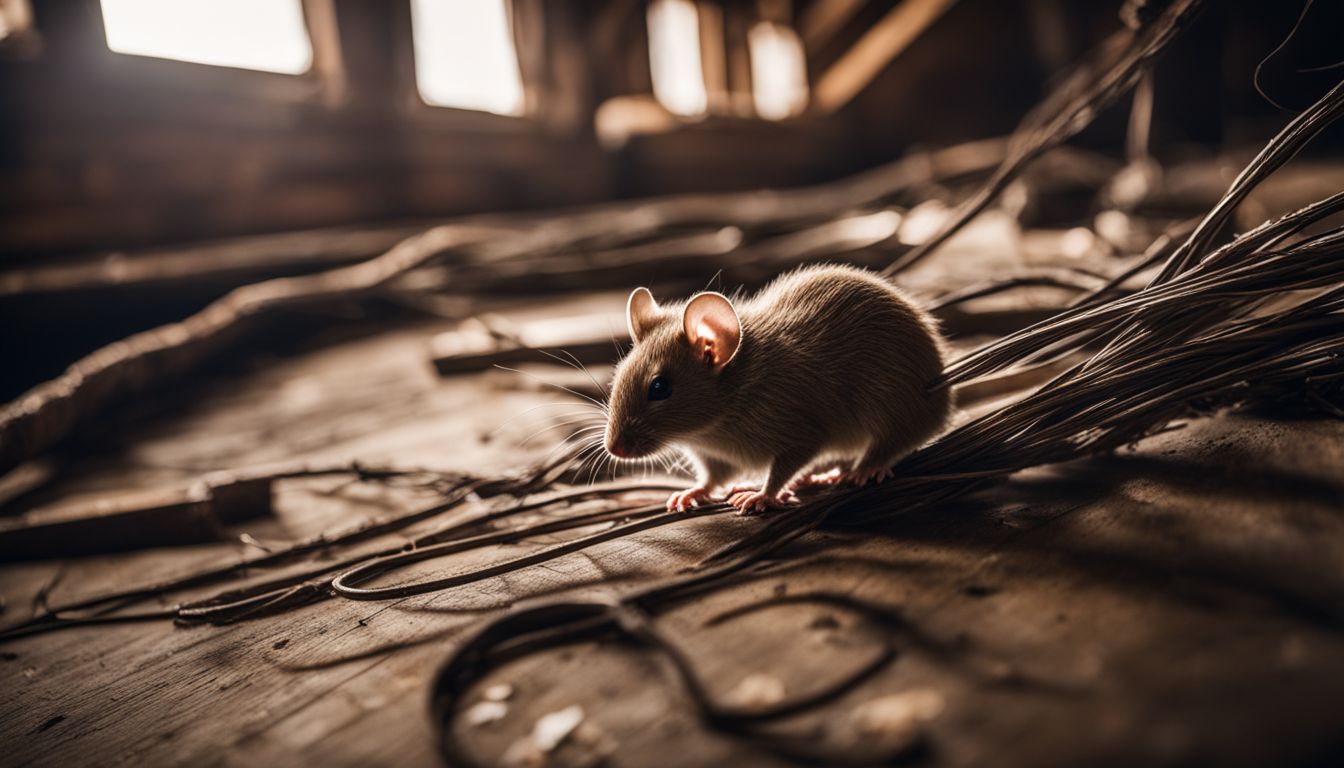
Discovering a mice infestation in your attic can be unsettling. Mice, though small, can cause significant damage and pose health risks. Recognizing the signs of their presence is crucial for timely intervention. From unusual noises to visible droppings, understanding these signs is the first step towards addressing the problem and safeguarding your home from these unwelcome guests.
Gnawed holes, wires, and furniture
Mice in your attic can be a big problem. They make holes and chew wires and furniture. Carved-out spaces, gnawed plastic, or cardboard point to infestation by rodents. Live wiring that mice have nibbled on can create fire risks.
Damaged furniture needs costly repairs or replacements, too! Such harm shows the presence of these pesky pests in your attic.
Droppings and urine stains
Mice leave behind droppings and urine stains. These are signs of a mice infestation in your attic. The droppings look like black grains of rice. They can be found near food sources or the areas where they move around.
It’s key to get rid of all mouse waste. Not doing so can harm your health and damage your home. Mice also urinate a lot, which leaves stains on the insulation in your attic. It is important to clean these up as well, for the same reasons as the droppings.
Scratching and scampering noises
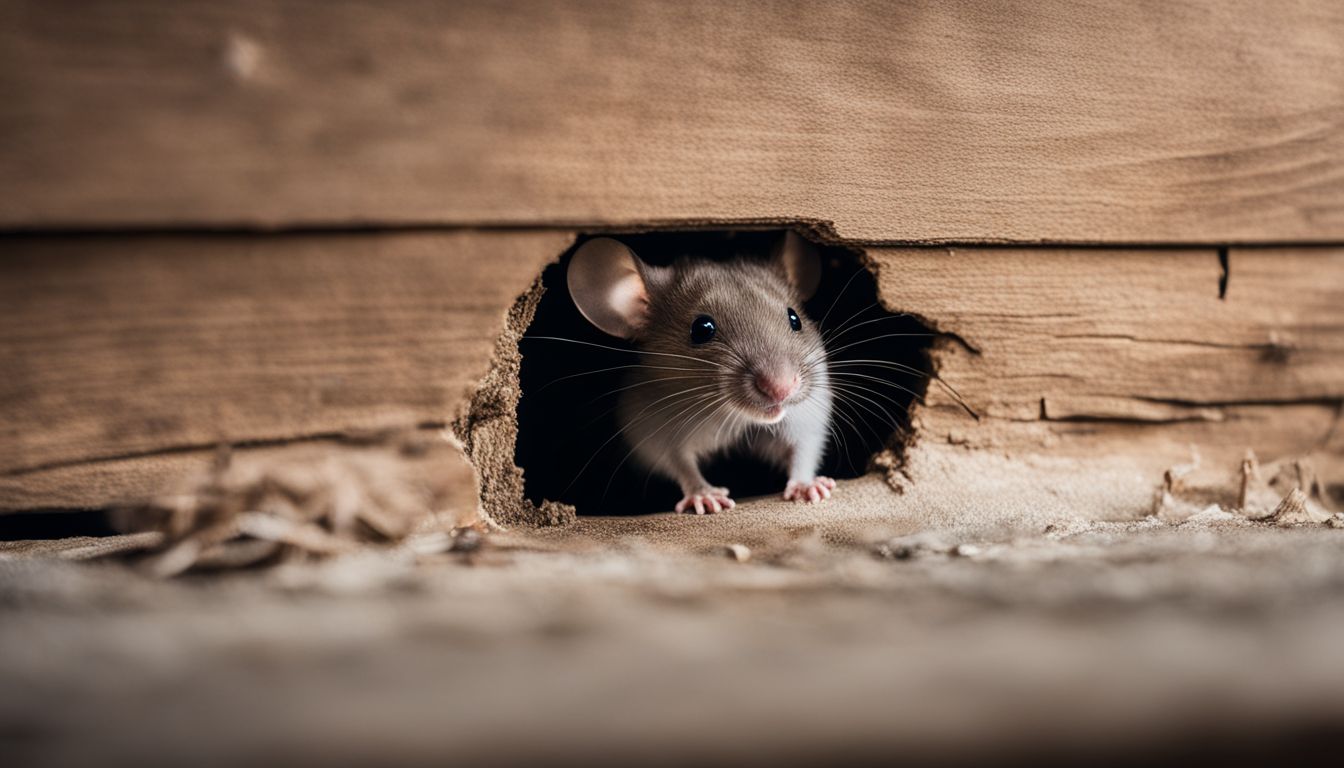
In your attic, you may hear weird sounds. These are often signs of mice. The noises can sound like scampering or scratching. This is more heard at night as raccoons and skunks make a lot of noise.
Rats, mice, and grey squirrels also live in attics and cause these sounds. Rodents like to chew on wood, which causes grinding sounds. If you hear this kind of noise from your attic, it means that there might be rats or mice there.
Why You Shouldn’t Rely on Pest Control Alone

Pest control alone is not a reliable solution for getting rid of mice in your attic as it only offers a temporary fix, poses potential health hazards, and can be costly and recurring.
Temporary solution
Pest control alone is not a reliable or long-term solution for getting rid of mice in your attic. It may only provide temporary relief from the infestation. Additionally, it can be costly and require recurring treatments.
DIY methods like using rodent poison or setting traps might also not be as effective as professional pest control. Moreover, these methods can pose potential health risks to people and pets, and they may harm the environment, too.
So, relying solely on pest control for mice eradication is not recommended to ensure a truly rodent-free home in the long run.
Potential health hazards
Mice infestations in your attic can lead to potential health hazards for you and your family. When mice are present, they leave behind feces, urine, and nesting materials that can be toxic and hazardous to human health.
Exposure to these substances can result in respiratory issues and the spread of diseases like hantavirus. Additionally, the presence of mice can also cause structural damage to your home, including chewing through wiring coatings, which could lead to electrical hazards and house fires.
It is important for homeowners with attics to address mouse infestations promptly in order to prevent any potential health risks or further damage to their property.
Costly and recurring process
Getting rid of mice in your attic can be a costly and recurring process. Simply relying on pest control alone is not enough because it only provides a temporary solution. In addition, the potential health hazards caused by rodent waste, such as feces and urine, can lead to diseases for both humans and pets.
Furthermore, the damage caused by mice, such as gnawed wires and furniture, can result in expensive repairs. To truly eliminate rodents from your home, you need to follow a 5-step solution that includes insulation removal, sanitation and disinfection, rodent proofing, air sealing, and new insulation installation.
By taking these steps proactively instead of depending solely on pest control measures, you can avoid the costly and recurring process of dealing with mouse infestations in your attic under insulation.
The 5-Step Solution for a Truly Rodent-Free Home

To truly rid your attic of mice and ensure a rodent-free home, a comprehensive approach is essential. This process involves several key steps, each designed to tackle different aspects of the infestation and prevent future problems. Here’s a detailed look at each step:
Step 1: Insulation removal
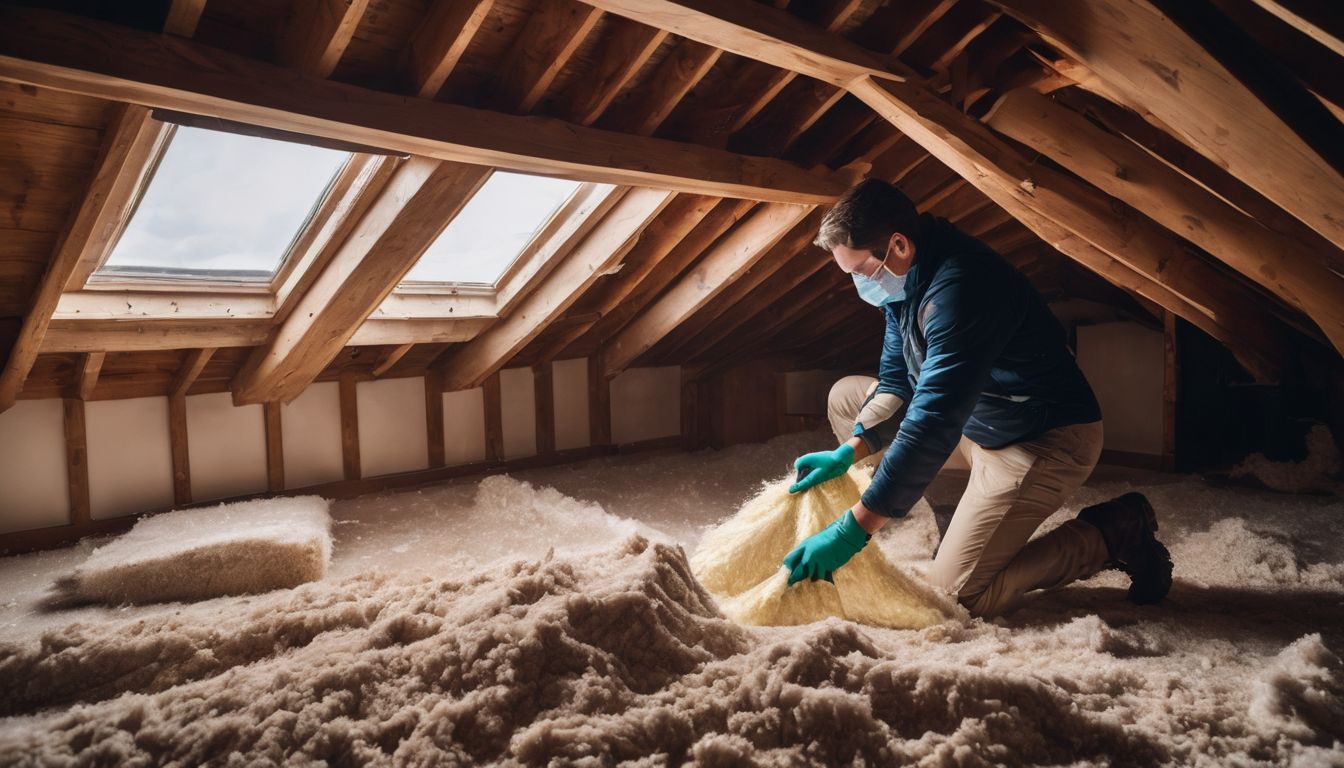
To effectively eliminate mice from your attic, the first step is to remove the insulation. This is crucial because rodents like mice can contaminate it with droppings, urine, and decomposing carcasses.
Before starting the removal process, it’s important to check for any presence of asbestos, mold, or rodents. If these are found, proper precautions should be taken before proceeding.
Once you’re ready to begin, wear gloves and use a bleach solution or EPA-registered disinfectant when cleaning up any urine and droppings left behind by the mice. Keep in mind that this step is just the beginning of a comprehensive five-step plan to achieve a truly rodent-free home.
Step 2: Sanitation and disinfection
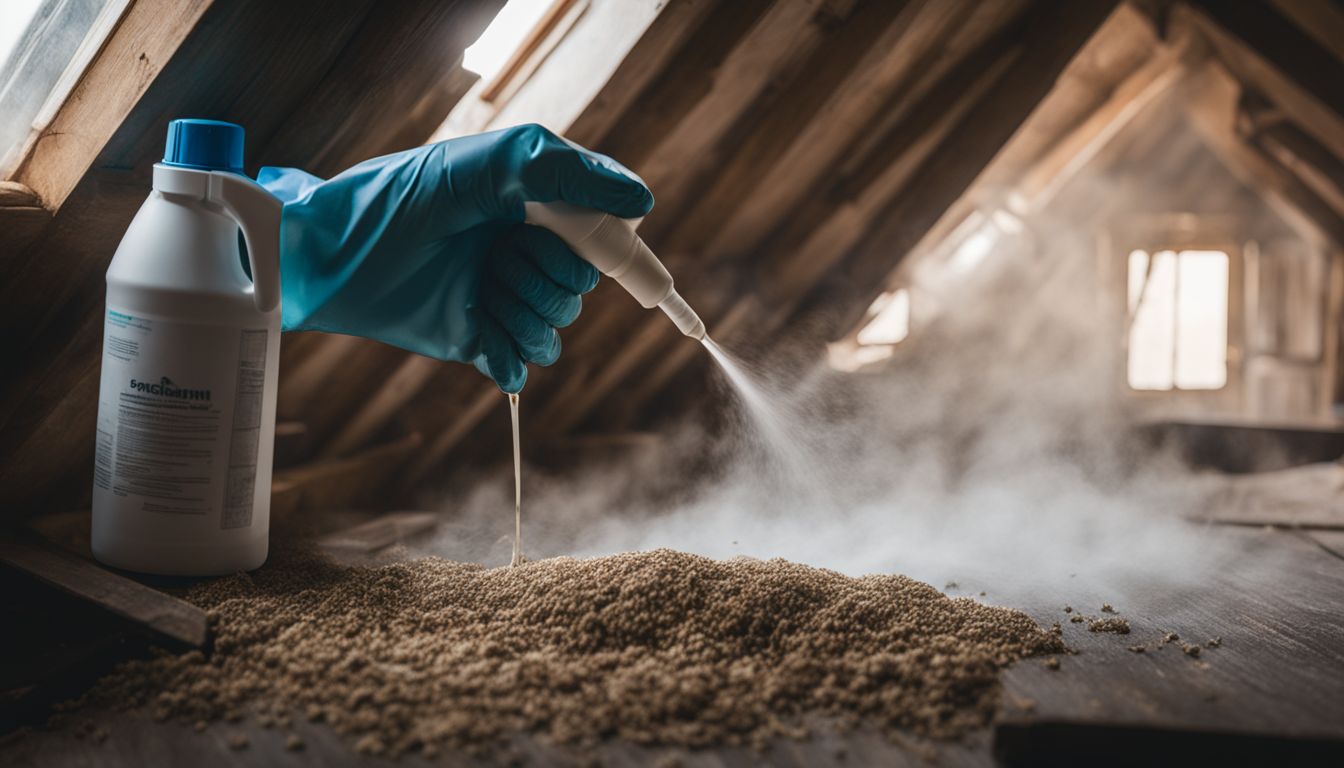
Step 2: Sanitation and disinfection is an important part of getting rid of mice in your attic. After removing the rodents, it’s crucial to clean and sterilize the area to eliminate any potential health risks.
You can use bleach or an EPA-registered disinfectant to spray urine and droppings left behind by the mice. Make sure to let the solution soak for at least 5 minutes before cleaning it up.
This step helps remove harmful bacteria and viruses that may be present in rodent waste, ensuring a cleaner and safer environment for you and your family. Remember, completing this step is just one part of the overall process – you still need to follow the remaining steps to effectively get rid of mice in your attic and prevent future infestations.
Step 3: Rodent proofing
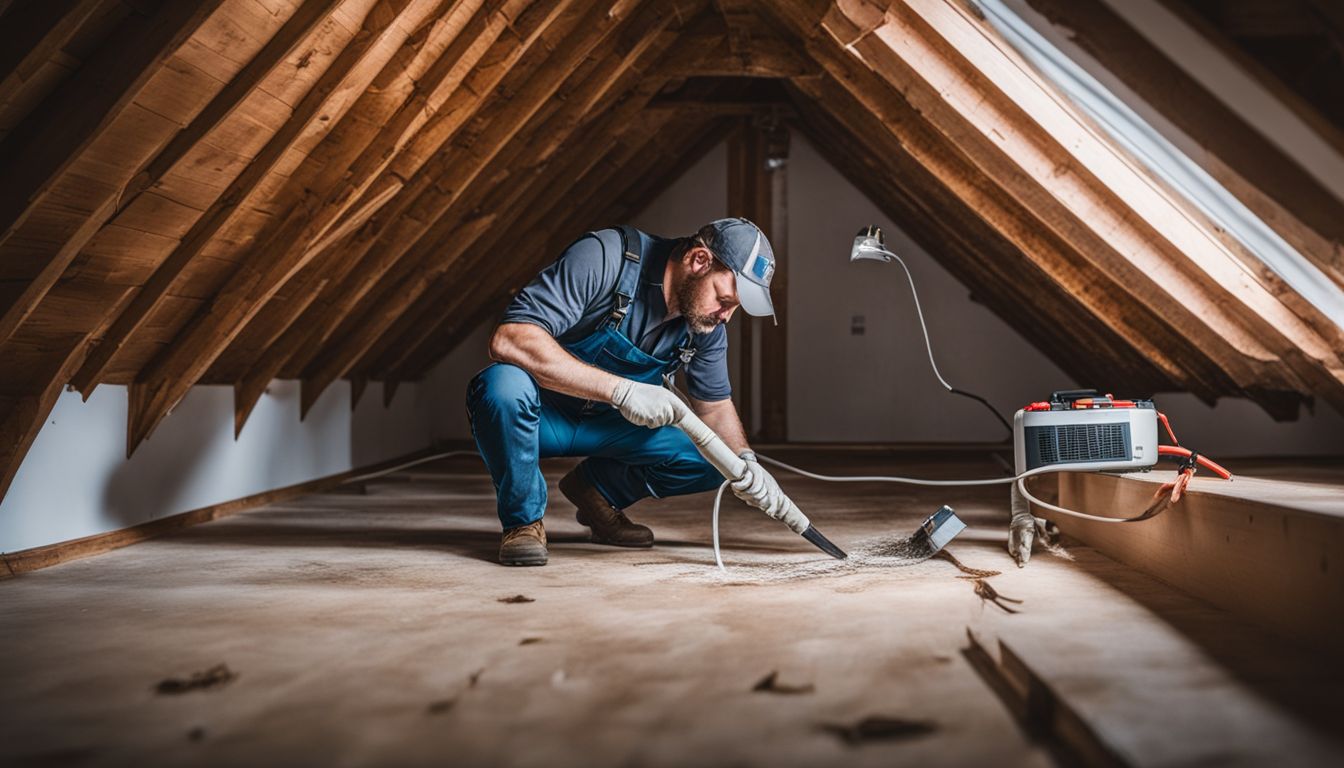
Rodent proofing is an important step in getting rid of mice in your attic. It helps prevent them from coming back and causing more damage. Professional rodent control services can help you with this by sealing cracks and holes where the mice could enter your home.
By blocking their entry points, you make it harder for them to get inside. This reduces the risk of another infestation and keeps your attic rodent-free. So, don’t forget to include rodent proofing as part of your plan to eliminate mice from your attic under insulation.
Step 4: Air sealing
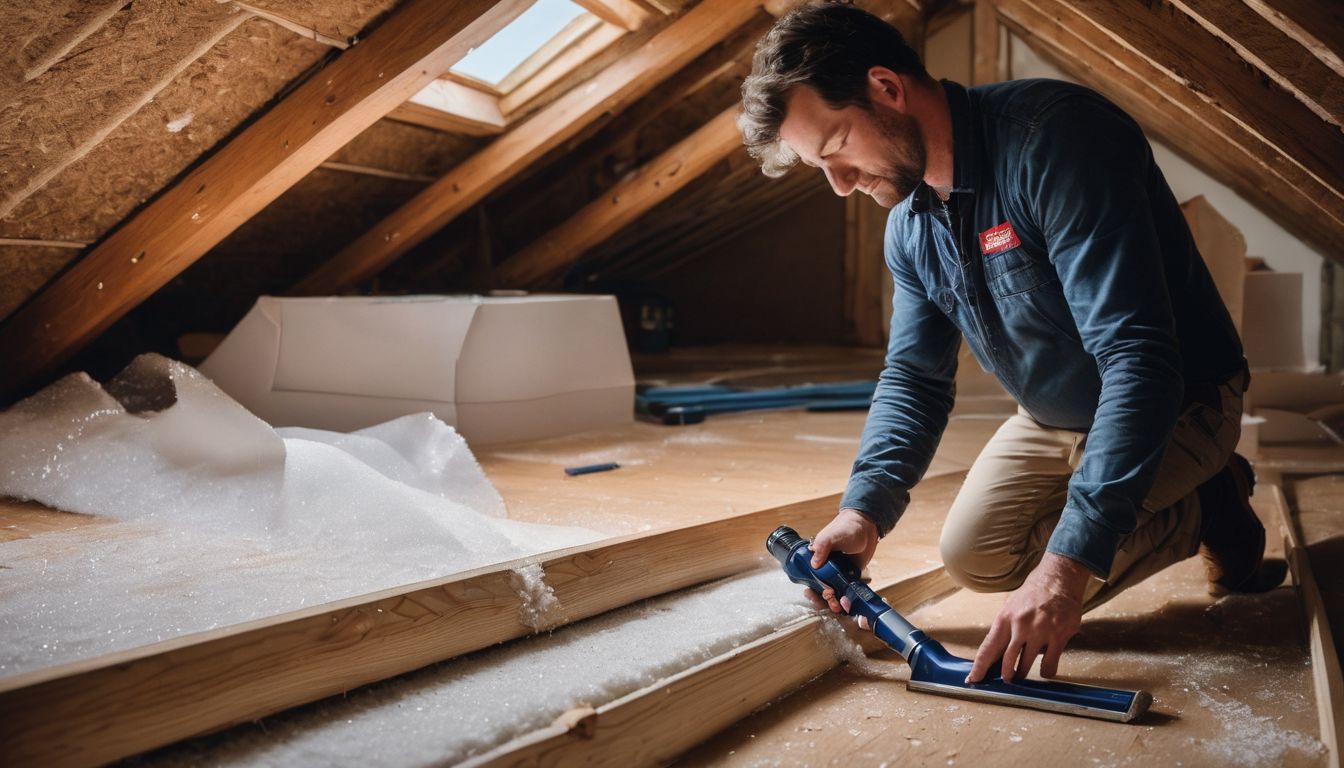
Air sealing is a crucial step in getting rid of mice in your attic and preventing future infestations. By properly sealing any openings or gaps, you can block the entry points for rodents and insects.
This helps to keep your home rodent-free and reduces the risk of other pests entering your attic. Using silicone sealant is an effective method for sealing around utility penetrations, like pipes or wires, as it deters insect movement.
It’s important to note that air sealing works best in areas where there is low rodent pressure or when gaps are less than ¼ inch. So make sure to check for any small openings and seal them up tight to ensure a truly rodent-free home.
Step 5: New insulation installation
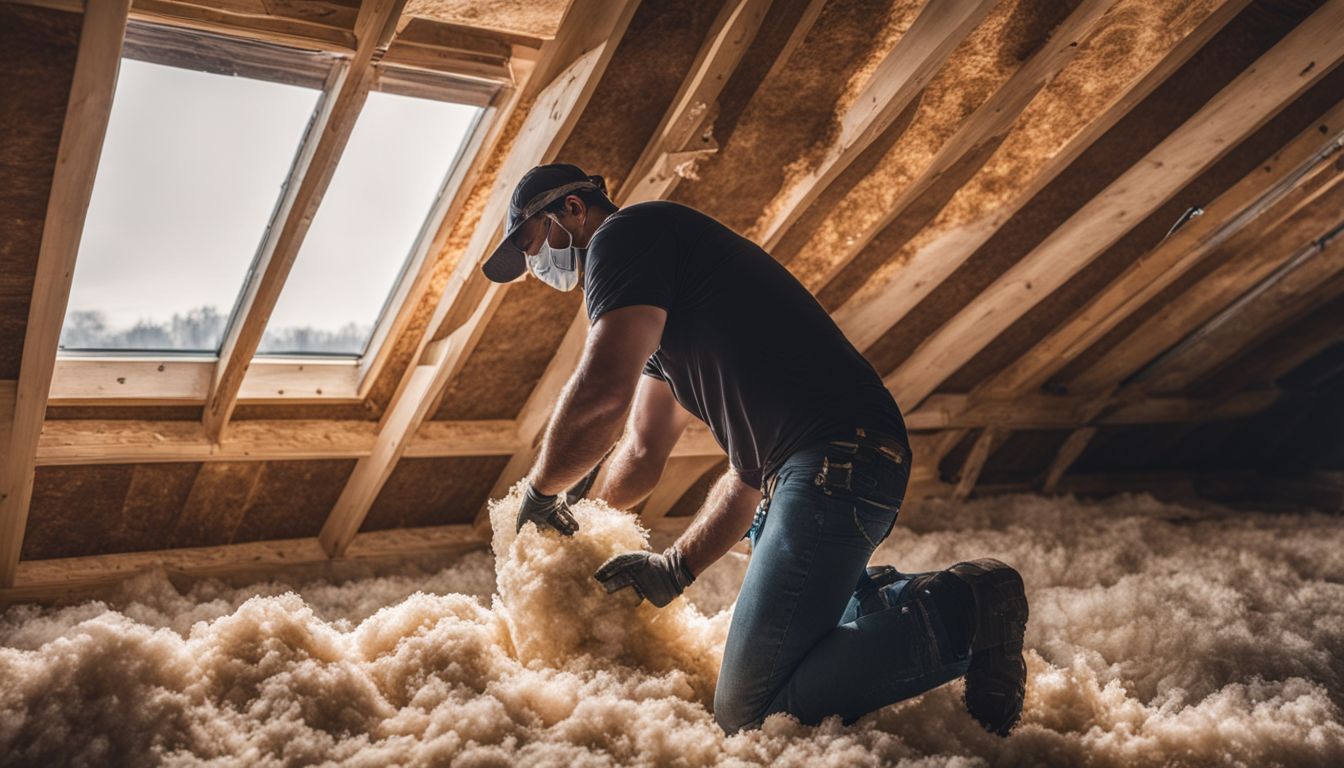
To truly get rid of mice in your attic, step five is to install new insulation. This is an important part of creating a rodent-free home. By replacing any insulation that may have been damaged or contaminated by rodents, you can help prevent future infestations.
Remember to remove any old insulation before installing the new one. This step is crucial in creating a safe and pest-free environment in your attic.
Effective Ways to Eliminate Mice in Your Attic Under Insulation
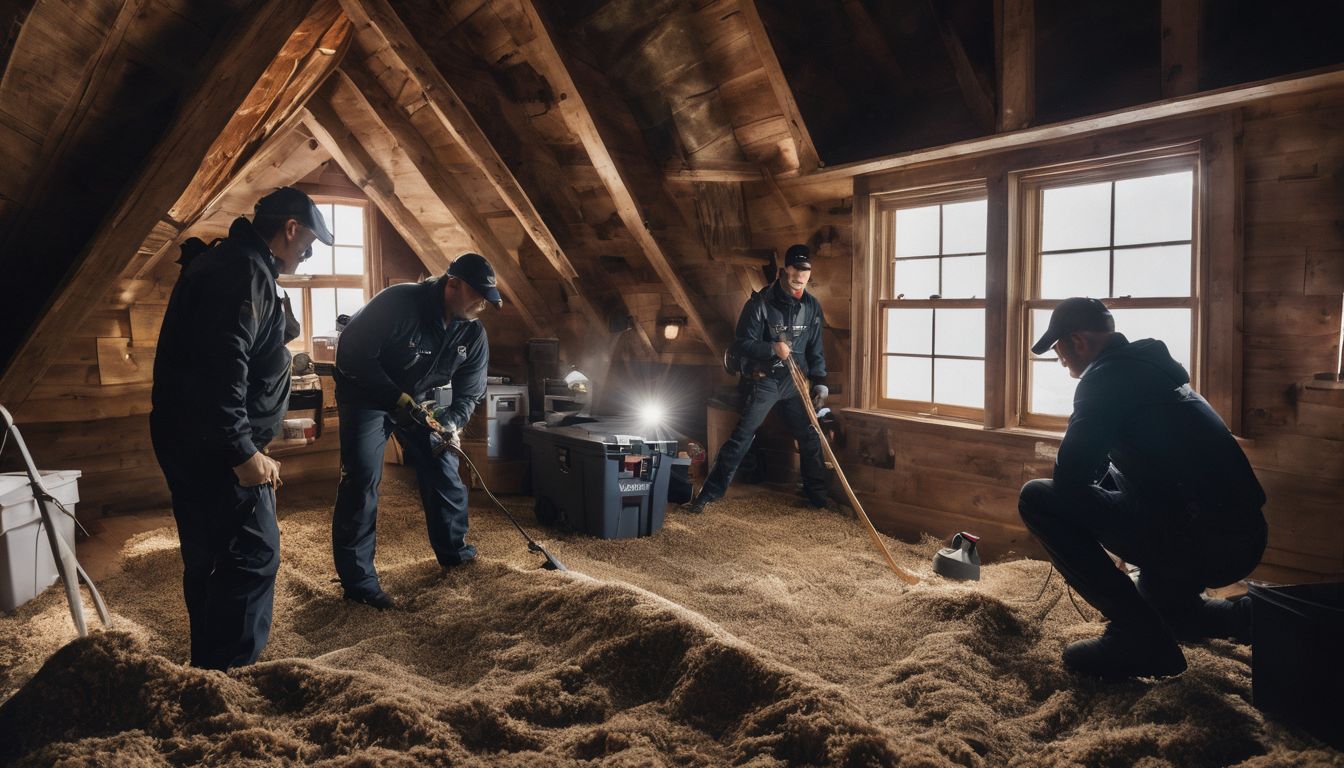
Inspect and identify entry points, reduce food and water sources, seal holes and gaps properly, place and check traps regularly. Don’t let mice take over your attic – learn more about effective methods to eliminate them today!
Inspecting and identifying entry points
Inspecting and identifying entry points is a crucial step in effectively getting rid of mice in your attic. By thoroughly examining your attic, you can pinpoint the access points through which the mice are entering.
This knowledge helps you understand how they are getting inside and allows you to take appropriate measures to block their entryways. So, before taking any other steps to eliminate mice from your attic, make sure to inspect and locate these entry points thoroughly.
Reducing food, water, and shelter sources
To effectively eliminate mice in your attic, it’s important to reduce their access to food, water, and shelter sources. Start by keeping all food securely stored in sealed containers, as mice are attracted to open food sources.
Clean up any spills or crumbs promptly, and avoid leaving pet food out overnight. Fix any leaking pipes or faucets to prevent water accumulation that could attract mice. Additionally, declutter your attic and seal off any potential hiding spots, such as piles of debris or cardboard boxes.
By removing these attractive resources, you can make your attic less appealing to mice and discourage them from staying in your home.
Properly sealing holes and gaps
Properly sealing holes and gaps is an important step in getting rid of mice in your attic. By using foam and sealant, you can effectively prevent these rodents from entering your home.
This helps to ensure that once you have eliminated the mice, they won’t be able to come back through these openings. Sealing up any potential entry points will make your attic a less attractive place for them to live and help protect your insulation from further damage.
So take the time to properly seal those holes and gaps, and keep those pesky mice out for good!
Placing and checking traps
To effectively eliminate mice in your attic under insulation, it is important to know how to properly place and check traps. Snap traps are considered the best type of mouse traps for this purpose.
When setting up the traps, make sure they are placed where you have noticed signs of mouse activity, such as gnawed holes or droppings. Set the traps lightly so that they can easily spring when a mouse touches them.
After placing the traps, it is crucial to check them regularly. Ideally, you should check the traps daily to see if any mice have been captured. If a trap has caught a mouse, wear rubber gloves and a mask for protection while disposing of the trapped rodent.
It’s recommended to wrap the dead mouse in plastic before throwing it away.
Conclusion: Maintaining a Mice-Free Attic and Prevention Tips
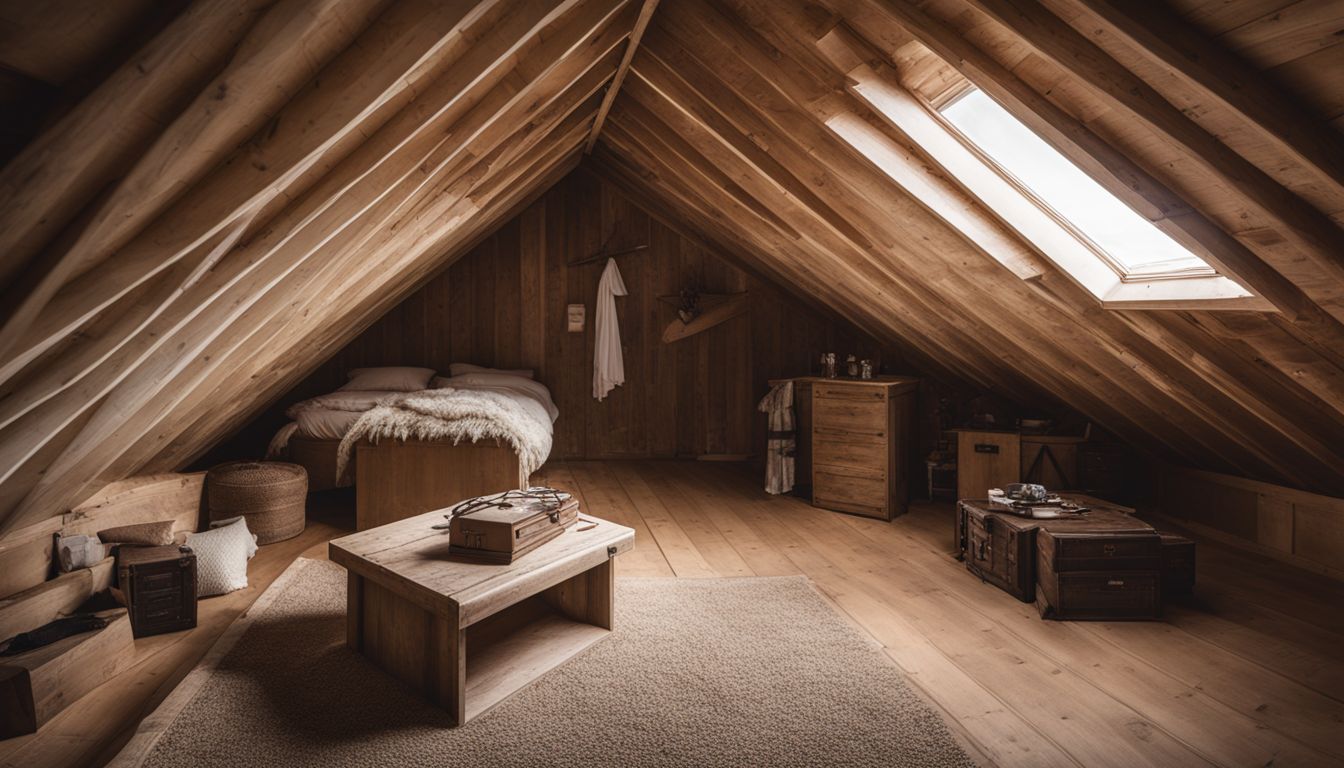
To keep your attic free of mice and prevent future infestations, follow these steps: remove insulation, sanitize the area, rodent-proof your attic, seal any openings, and install new insulation.
Inspect your attic regularly for signs of mice and reduce their food and water sources. Set traps with bait like peanut butter or cheese to eliminate any remaining mice. With these measures in place, you can enjoy a mouse-free attic for years to come.
Frequently Asked Questions
1. How do I know if there are mice in my attic under the insulation?
You can look for signs such as droppings, chewed wires or furniture, nests made of shredded materials, and scratching noises to determine if there are mice in your attic.
2. What is the best way to get rid of mice in the attic under the insulation?
The most effective method to get rid of mice in the attic is by hiring a professional pest control service that specializes in rodent removal. They have the expertise and tools to eliminate the infestation safely.
3. Can I use poison or traps myself to remove mice from my attic?
It is not recommended for homeowners to use poison or traps themselves because it can be dangerous and ineffective if not used correctly. Professional pest control services will ensure safe and proper removal methods.
4. How long does it take to get rid of mice in the attic under insulation?
The time it takes to eliminate a mouse infestation completely depends on various factors, such as the severity of the infestation, accessibility of entry points, and effectiveness of treatment methods used by professionals.
5. How can I prevent mice from returning after they have been removed from my attic?
To prevent mice from returning after removal, seal any gaps or cracks that could serve as entry points into your home, keep food stored securely, maintain cleanliness, and consider installing mesh screens over vents and openings.
